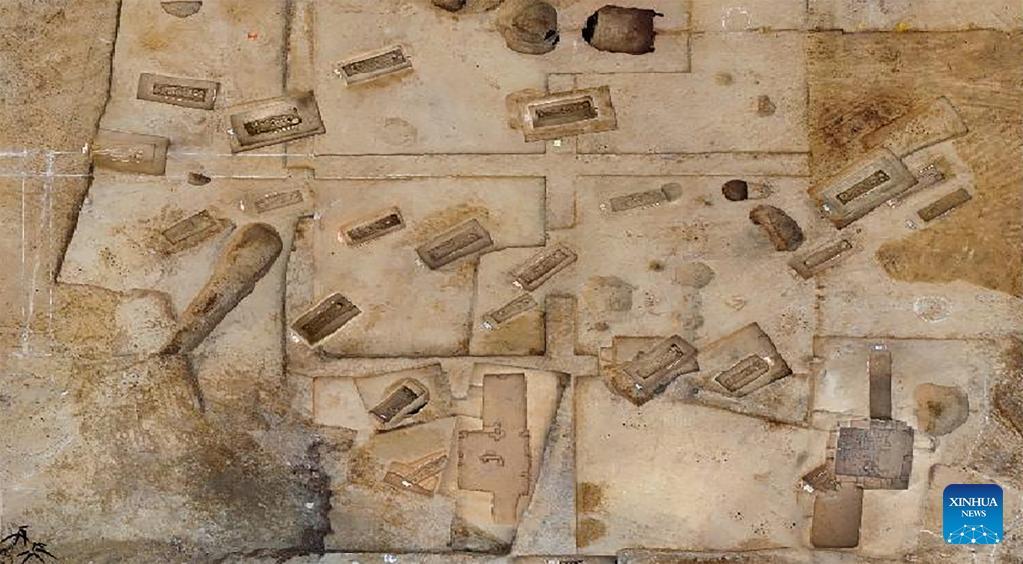Ruins of Xia-Shang-Zhou settlement unearthed in Beijing
- By Wang Meijiu
 0 Comment(s)
0 Comment(s) Print
Print E-mail China.org.cn, June 2, 2023
E-mail China.org.cn, June 2, 2023

This undated file photo shows the site of an ancient settlement cluster discovered in Xingong, Fengtai District of Beijing, capital of China. An ancient settlement cluster with double ring trenches as its major defence was recently discovered at a site in Xingong, Fengtai District of Beijing, said the municipal cultural relics bureau. (National Cultural Heritage Administration/Handout via Xinhua)
The National Cultural Heritage Administration held a meeting on May 30 to discuss the progress of the "Archaeological China" project. They announced the most recent archaeological discoveries from the Shang dynasty (1600 B.C.-1046 B.C.), one of which included the first-ever discovery of ruins of a Xia-Shang-Zhou period double-ring moat settlement in urban Beijing.
Located at the Fengtai New Palace site on Nanyuan street, Fengtai district, the site was subjected to systematic archaeological investigation and excavation. Archaeologists discovered the Datuotou cultural settlement, with radiocarbon dating placing it between 1500 B.C. and 1300 B.C. Additionally, remains from the late Shang to Western Zhou periods were also unearthed.
Archaeologists have found more than 300 relics from various periods at the site, including settlements, tombs and traces of ancient rivers during the Xia-Shang-Zhou era. Settlement sites from around the Shang dynasty mainly consisted of a settlement surrounded by two ring moats, with cemeteries outside these moats.
Tombs and related remains have also been found around the site. The abundance of unearthed relics, such as exquisite flared gold earrings and a 3,800-year-old boot-shaped pottery statue, reveal the high-ranking status of the tombs' occupants.
The New Palace site is the first settlement site with double ring moats from this period discovered in Beijing. The finding reflects the history of the exchange and integration between the Yanshan Mountains and the northern grassland during the Bronze Age.
The National Cultural Heritage Administration also announced several other archaeological achievements relating to the Shang dynasty. These include the ruins of Huanbei Shangcheng in Anyang, Henan, archaeological discoveries and research in Hebei, and the Zhaigou ruins site in Qingjian county, Shaanxi province. These discoveries shed light on urban construction, societal system, funeral etiquette and handicraft production during China's Shang Dynasty, which is of great value.






Go to Forum >>0 Comment(s)